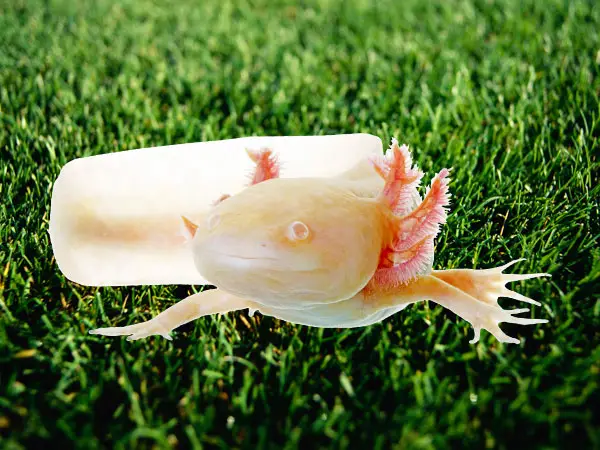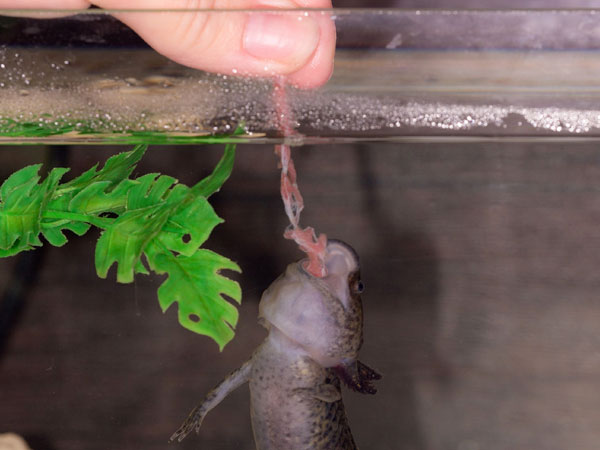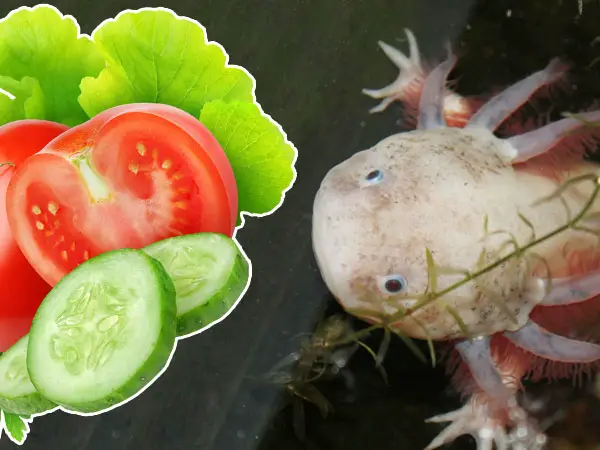Axolotls come from the Ambystoma family, which is the direct relative of the salamander family. As we know, salamanders can live both on water and on land, and many people think that axolotls can do the same as they are related. But, the biological development of axolotls was slightly different, and it led to some slight differences.

Can axolotls live and walk on land? The answer is no, axolotls cannot live and walk on land.
Axolotls are aquatic animals, and have adapted to live in the water. Thus, they can’t live outside water, and won’t survive on land for long.
Even though axolotls do have a capacity to breathe air, they won’t survive outside of water for prolonged periods. They will survive for some time out of the water, but that period is pretty short. Although axolotls are amphibians, they won’t survive out of water.
Let’s take a look at why that is and what is the ideal conditions for an axolotl to survive.
Can You Hold Axolotls in Your Hand?
Many owners want to hold axolotls in their hands, especially kids who want to inspect this interesting creature. But holding axolotls in your hand for too often or for too long is not recommended.
Firstly, it’s because you can damage their slime coat if you do it too often. Once it gets compromised, their body will be more exposed to various problems and diseases, especially to the water chemicals that the slime coat protects them from.
Secondly, they won’t survive out of the water for prolonged periods. Sure, it can survive those couple of minutes that you hold it in your hands, but it’s not recommended to do so. It puts a lot of stress on the animal, and if you want to hold it in your hand for longer, they can even die.
It’s not recommended to hold them in your hand for longer than a couple of minutes. Sure, they can survive even up to an hour, but that’s enough to cause them stress. And if you do it often, it can produce even more stress and lead to health problems.
How Long Can Axolotl Survive Outside of Water?
Generally, axolotls will survive for up to an hour outside of water, depending on the conditions of the air such as humidity and temperature.
But, it’s better not to test this capability too often. It might happen to you alone, when an axolotl accidentally jumps out of water, or when you are doing water changes. If your axolotl jumps out of water, and if the impact is not too strong, it will survive, but only for a limited period of time. This period can extend to up to an hour, but that depends on air humidity and temperature.
This problem can also occur when you are doing water changes. Sure, water changes should be done regularly, maybe on a weekly basis or even more often if you don’t have a filter. But a problem might arise when you change higher quantities of water, which is when axolotl will have to survive without water for some time.
It’s advisable to have an additional tank that will allow you to change the water easily and without too much stress for your axie. Transfer them as fast as possible when you are changing the water, and it’s probably only acceptable to have them out of the water for a few seconds.
Anything more than that can cause various problems, and can increase stress levels significantly.
Can Axolotls Breathe Outside of Water?
Yes, axolotls do have the capacity to breathe outside of water. Axolotls have an impressive array of external gills that are satisfying to watch when they flare them. But gills play a very practical role for axolotls.
They help them exchange the gases from their bodies and bring in healthy gases such as oxygen. That happens normally in the water, and there are three main areas where the gills work: on the left and right side of its head, and on top of its head.
So, when they are outside of the water, these gills will still work, but won’t be as effective as they are in the water. You might see them flare their gills as a sign of distress when they are out of water, unable to pump oxygen in their lungs. Usually, they’ll survive for as much oxygen they have in their lungs.
But axolotls do use other means of respiration when they are out of water that enable them to get some oxygen from the air. Namely, they have an ability to breathe through their skins, and lungs also offer a smaller portion of the respiration.
They also have buccal respiration, which is the ability to breathe with the cheeks. Again, these means of obtaining oxygen are not as effective outside of water, and will only last the axolotls for a limited period of time.
Can Axolotls Walk on Land?
Axolotls are aquatic animals. Thus, their bodies are more adapted to moving in the water, and their muscles and legs are suited primarily for swimming and moving around in the water.
When they come out of the water, they will find themselves slightly unable to move around. Sure, they will do some movement on the land, but this will be very slow and ineffective. That’s because their limbs are not the best suited for moving around on the land.
Once they come out of the water, they’ll struggle massively. They won’t move around very easily, and their breathing capacity is only enough to last them for a few minutes, perhaps up to an hour.
Conclusion
Axolotls are aquatic animals. They won’t survive outside of water for long, and you should be wary when you are holding them in your hand.
In some cases, axolotls will jump out of the tank on their own when they feel uncomfortable, which is when a lid might come in handy. It’s better to protect them from being outside of water in the first place.




